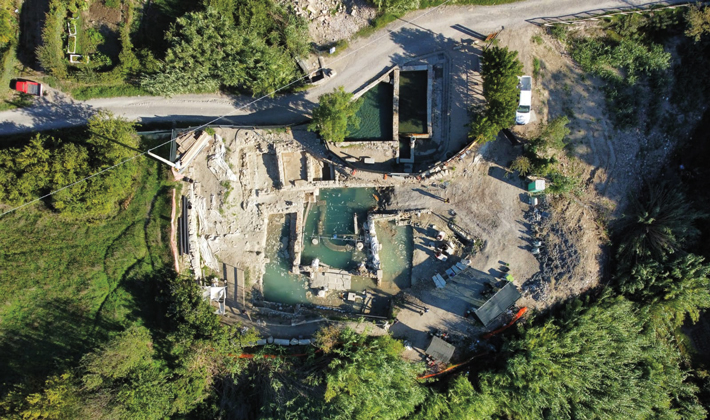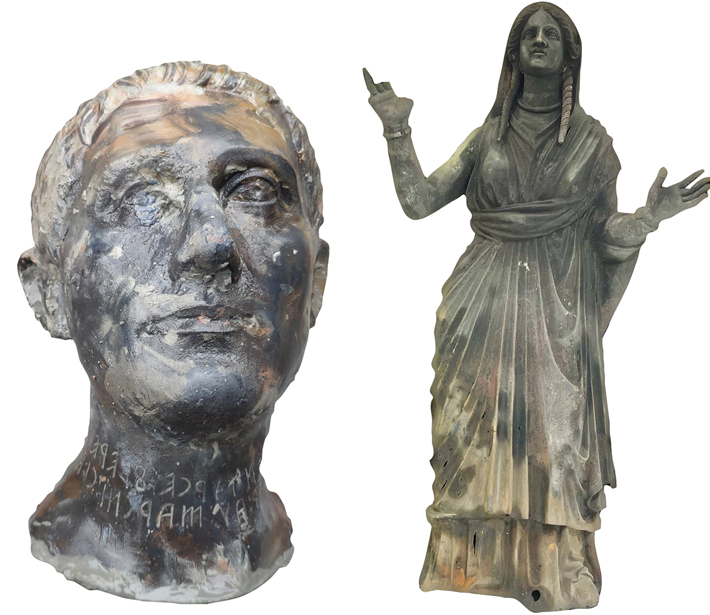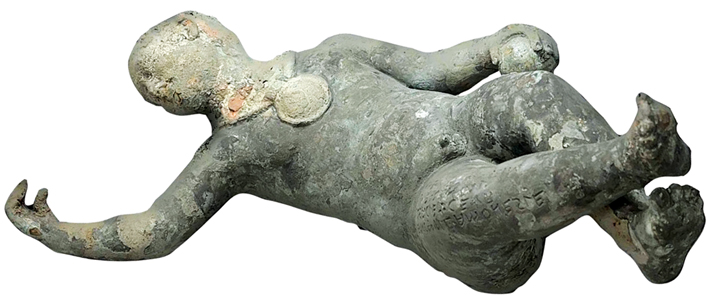
At the beginning of the first century A.D., lightning struck a sanctuary at a site known as Bagno Grande, or Large Bath. For centuries, the thermal pool there had been sacred to both Etruscans and Romans. When lightning hit, the sanctuary’s priests were compelled, according to both Etruscan and Roman beliefs, to bury under a layer of terracotta tiles hundreds of votive offerings that had been brought by pilgrims over the years. This ancient ritual, known as fulgur conditum, or “buried thunderbolt,” was intended to seal the objects in and mark the spot as especially sacred. Archaeologist Jacopo Tabolli of the University for Foreigners of Siena describes the discovery of these offerings, which include bronze statues of men, women, children, divinities, and individual body parts, as a complete surprise. “We knew from archival sources that in the 1600s and 1700s there was a thermal spa close to Bagno Grande,” he says, “but we had no idea it was an ancient sanctuary.”

Among the rarest finds are 14 large bronze statues, some of which bear dedications to gods including Apollo, Asclepius, Hygeia, Isis, and Fortuna Primigenia, who are all associated with health and healing. As important as the individual artifacts, explains Tabolli, is the sealed context in which they were found. “The exceptional discovery here is the fact that we can unlock the site’s sacred context and landscape by analyzing all elements from the mud to the bronze,” he says. “We know that the Romans and Etruscans interacted continuously from the beginning of the first millennium B.C. and that this included moments of conflict and of peace. At the sanctuary, we see that there are safe spaces in which identities of different communities and cultures merged.” This continued to be true even after part of the pool was buried. From the first to fifth century A.D., the site was considered sacred by pagan worshippers—who left even more offerings, mostly bronze coins, trees, branches, and fruits—and later by Christians.






